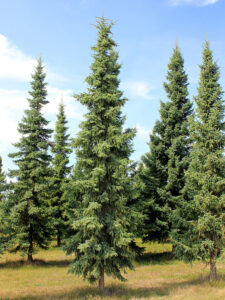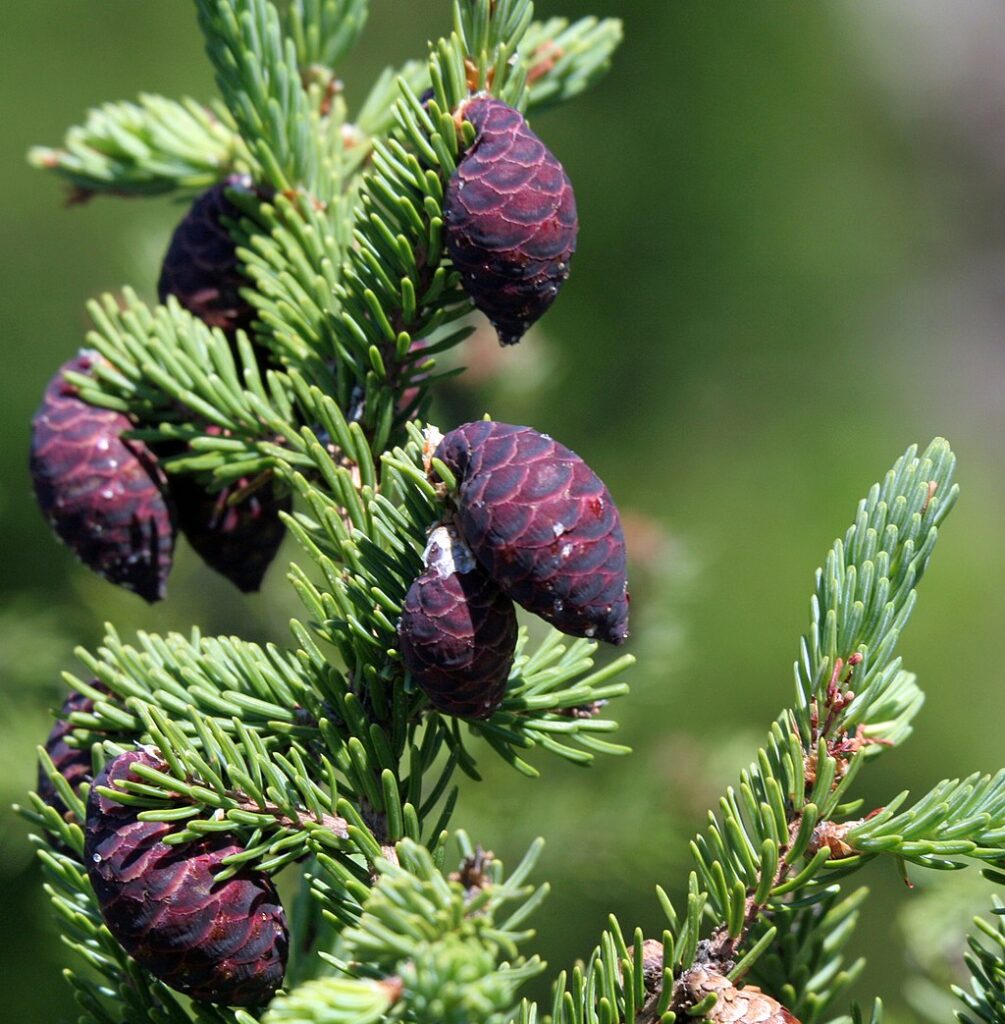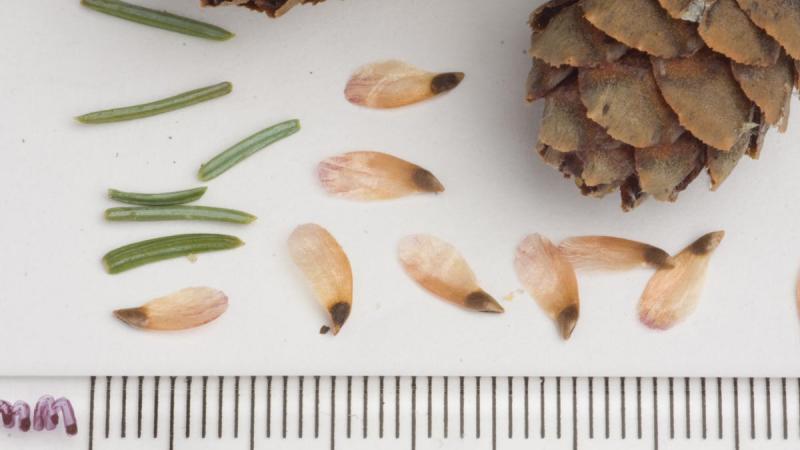
If you have ever spent time in Newfoundland and Labrador (NL), you have likely encountered the black spruce – NL’s provincial tree! While other native spruce species, like the red spruce, are very limited in NL, the black spruce is abundant. In fact, it is the province’s most numerous tree species.
The black spruce is a very widespread evergreen conifer across Canada, growing in the Boreal forests of every province and all three territories. While this transcontinental species is slow-growing, it is incredibly adaptable and isn’t fussy about soil type and moisture levels.
You will often find black spruce growing in harsher conditions like swamps and bogs, though it really can grow anywhere in the Boreal zone. Its adaptability makes it a great tree to plant in your community!
Read on below to spruce up your knowledge about black spruce!
Black spruce can live up to 200 years, even in conditions that many other trees and shrubs find too harsh.
About the Black Spruce Tree (Picea mariana)
Black spruce, also known as “bog spruce” and “swamp spruce,” are small and slow-growing. Their appearance varies based on their growing conditions. For example, in wet conditions, they appear more narrow, but in moist soil, they grow taller and more broadly. They generally grow between 15 and 60 feet tall – much shorter than the red spruce and white spruce.
This species of spruce can be identified by its bark, twigs, needles, and cones.

Bark: Bark is greyish-brown to reddish-brown, thin, and scaly.
Branches/Twigs: Small hairs grow densely on the bark of young branches.
Needles: Needles are square, half an inch long (smaller than red spruce and white spruce), stiff, four-sided, blueish-green on the top, but paler green on the underside. Needles grow around the branches.
Cones: Cones are small, stumpy, and nearly round – only growing 0.5 to 1.5 inches long. When young, cones are purple but appear red-brown at maturity. Cones often cluster at the top of the tree. Cones can hang onto the tree for up to 30 years!
Wildlife Value of White Spruce
Like native red and white spruces, black spruce trees are an important food source for many species. Snowshoe hare enjoy eating young seedlings while red squirrels gather the cones. Mice, voles, and chipmunks forage seeds from the ground, and moose and white-tail deer rely on the black spruce for nutrition when other food sources are scarce.
Many birds eat black spruce too, including grouse, grosbeaks, and crossbills. In addition, boreal bird species establish breeding habitats in black spruce trees.
Harvesting Seeds from White Spruce Trees

Black spruce trees will typically only produce cones once they are 30+ years old, so you will have better luck collecting seeds from older specimens. Cones tend to reach maturity in October but can be harvested throughout the winter months. Unlike red spruce and white spruce, which drop their seeds as soon as they open, black spruce release their seeds slowly over time.
Mature cones are copper in colour. When harvesting cones for seed, look for ones that are closed, plump, and firm. Cones that are open, dry, and hard have already released all or most of their seeds.
Once harvested, black spruce cones should be placed into a breathable bag or box where they can dry and release their seeds.
You can then stratify and germinate the seeds similar to the process for red spruce before planting them in your nursery bed. In time, you will have a highly adaptable tree that will thrive almost anywhere you plant it!
Black spruce trees open their cones slowly over time, making them a “serotinous species.” However, wildfires or controlled burns prompt them to open their cones and disperse their seeds very quickly, which is part of ensuring their survival in fire-prone areas.
Learn More About Trees and Forest Restoration
Want to learn more about how you can support native species and plant more trees in your community? Check out our collection of Forest Restoration Nurseries resources that are brought to you by the Knowlesville Art and Nature Centre and The Tree Project! Be sure to take a look at our free Community Nurseries guide too, which contains helpful information about establishing nursery beds and growing native trees and shrubs.
Stay in touch with us by following the Knowlesville Art and Nature Centre on Facebook and Instagram!
